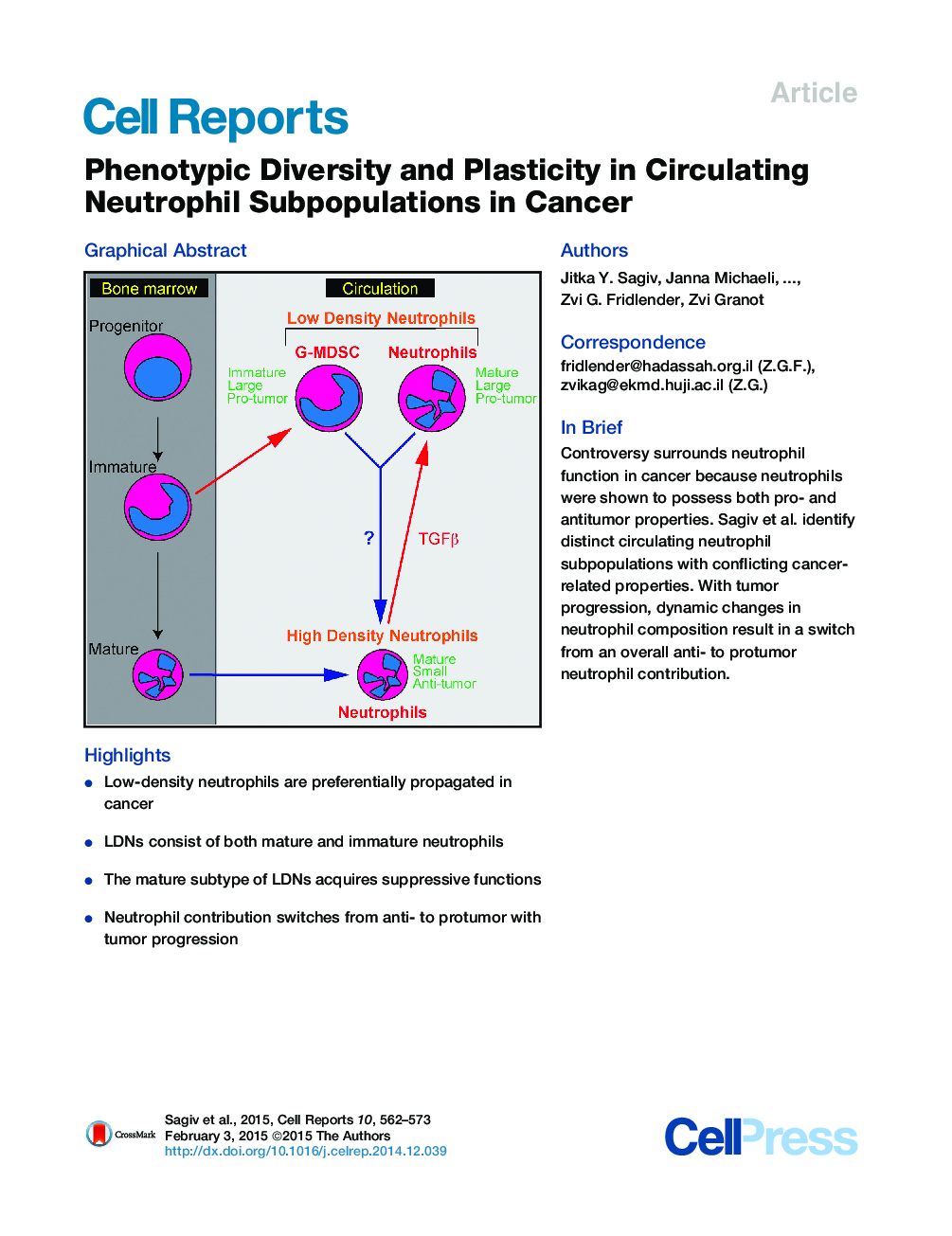| کد مقاله | کد نشریه | سال انتشار | مقاله انگلیسی | نسخه تمام متن |
|---|---|---|---|---|
| 2041444 | 1073161 | 2015 | 12 صفحه PDF | دانلود رایگان |
• Low-density neutrophils are preferentially propagated in cancer
• LDNs consist of both mature and immature neutrophils
• The mature subtype of LDNs acquires suppressive functions
• Neutrophil contribution switches from anti- to protumor with tumor progression
SummaryControversy surrounds neutrophil function in cancer because neutrophils were shown to provide both pro- and antitumor functions. We identified a heterogeneous subset of low-density neutrophils (LDNs) that appear transiently in self-resolving inflammation but accumulate continuously with cancer progression. LDNs display impaired neutrophil function and immunosuppressive properties, characteristics that are in stark contrast to those of mature, high-density neutrophils (HDNs). LDNs consist of both immature myeloid-derived suppressor cells (MDSCs) and mature cells that are derived from HDNs in a TGF-β-dependent mechanism. Our findings identify three distinct populations of circulating neutrophils and challenge the concept that mature neutrophils have limited plasticity. Furthermore, our findings provide a mechanistic explanation to mitigate the controversy surrounding neutrophil function in cancer.
Graphical AbstractFigure optionsDownload as PowerPoint slide
Journal: - Volume 10, Issue 4, 3 February 2015, Pages 562–573
